Tiger Balm Tales Vol. 7
Day 4-5-6
A routine is formed. Get up at 6:30 AM. Pack up everything by 7:00 AM. Eat breakfast. Begin to hike from 7:30 AM to 4 or 5 PM. Unpack and change out of sweaty clothes. Choose dinner from the same menu as the night before (even though it’s a different tea house in a different village). Have a big thermos of tea, put on all of the warm clothes I have with me, and go to bed at 9 PM. A simple and predictable life.
It’s amazing how fast you can adapt when you have to. It only took about 4 days of hiking and we were in a predictable rhythm. Even though the days were predictable, I was still constantly torturing my psyche by trying to predict whether we’d make it to the pass or not. I would vacillate back and forth rapidly. Yes, we can do it; No, we’ll never make it. It was quite exhausting! In addition to worrying about the altitude on the Thorong La pass, I was constantly worried about my father and his ability to complete this hike as well as his health and safety.
As routines formed, other things were in constant states of change. We were making our way to Manang (via Chame and Pisang), the rest spot on the 21-day trek up the mountains. As we gained bits of altitude, we lost oxygen. As the altitude changed, our bodies tried to adjust and adapt. The initial signs of thrusting our bodies into this high altitude were beginning to show. My sleep was restless; tossing and turning in the night. This was accompanied by crazy, vivid dreams that would wake me up in a cold sweat; all symptoms of existing in a higher altitude. I wondered if I would ever have sound sleep again.
The environment was also ever-changing. We had hiked through terraced rice fields to windy valleys and pine trees. We had started to enter the world of snow-capped peaks. If I closed my eyes and sucked in a big nose of air, I would be transported to the American Northeast – the smell of pine and the crisp fall air. The colors were exploding in reds, yellows, and burnt orange on the mountainsides. The comforting aroma of fires wafted throughout the villages.
The temperature was changing too. Every day I would begin with yet another layer on me. I tried to not use all of my clothes too early on as then I’d have nothing left to layer upon myself when it was really cold. Each night I would sleep with more clothing on. The tea house lodging never had any heat (and rarely had electricity!), so we were left with trying to stay warm by layering. By Day 6 I was sleeping in long underwear, a wool sweater, a wool hat, wool socks, and a scarf. All of this was tucked into a sleep sheet and a down sleeping bag. No wonder why my sleep wasn’t very fitful – I was the size of the abominable snowman!
My muscles were also undergoing changes. They were screaming out in pain each night and morning thanks to overuse and undertraining. This is where the Tiger Balm came in. We’d get out our little container of Tiger Balm and put it in one of our pockets for about an hour so that the balm would warm up and be easy to spread on our sore muscles. Then my dad and I would take turns putting the balm on all of our aches and pains, and there were many. After a few days, my whole sleeping bag smelled like Tiger Balm. We’d get in our little balm sleeping bag cocoons, put on our headlamps, and read up on the next day’s trekking; trying to prepare ourselves mentally for what we had to accomplish next.
We also started reading up on AMS – Altitude Mountain Sickness. We were now over 9000 feet and this is when your body started to say “What the hell are you doing? Retreat to where I can breathe!” Since I’ve actually had severe altitude sickness before when I failed to summit Kilimanjaro, I was extremely concerned about getting it again.
I do remember how horrible it was, and mostly I remember the feeling of not making your goal. I was going to do everything possible to make it over this pass this time, I didn’t want a little thing like lack of oxygen stopping me! However I couldn’t help but have all the memories of Kili come flooding back to me – the delirious sleep, the asthma-like breathing, the headaches, the puking – I didn’t want a repeat show.
At 9,000 feet our breath was heavy and slow already. Even though the hiking was flat and relatively easy, my legs were tired, my bag seemed heavy, and blisters were forming on my heels. What should have been easy seemed hard. We took our time and tried to make lots of stops. I could tell my dad was as tired as I was. As we trekked towards Manang we had a long walk through a windy valley where we began to see the beautiful, high snowy peaks. These peaks were over 25,000 feet, but it didn’t seem like it since we were already around 10,000 feet! There’s something amazing about standing on solid ground and peering at peaks that are 25,000 ft; a moment I never want to forget.
As we walked through the valley we were exposed to the daily life of the Nepalese. We came across many locals out harvesting carrying large bundles of hay for their animals. The basic rule was, if you could walk, then you could carry hay. I saw so many kids carrying huge haystacks on their backs. I used to think my dad was really mean for making my brother and I carry bushels of potatoes up the hill to our house; that seemed pretty lame at this point. We saw people cutting up lumber, thrashing millet, and plowing fields; everyone was working hard on these cold fall days. As we neared Manag, yaks first started to appear as a fixture and so did the signs for yak cheese.
We had hit our rhythm – even though our environment was constantly changing. These were wonderful days of trekking.
All Photos from Days 4, 5, and 6
Click on the photo to see all the photos at once, or go directly to the Nepal gallery at Smugmug.
Want to read the Tiger Balm Tales from the beginning?
Vol. 1 – The Begining of a Nepal Trekking Plan
Vol. 2 – Preparing the Parents
Vol. 3 – Annapurna Itinerary
Vol. 4 – Travel Back in Time
Vol. 5 – Breathe Through Your Mouth
Vol. 6 – Road Work Ahead

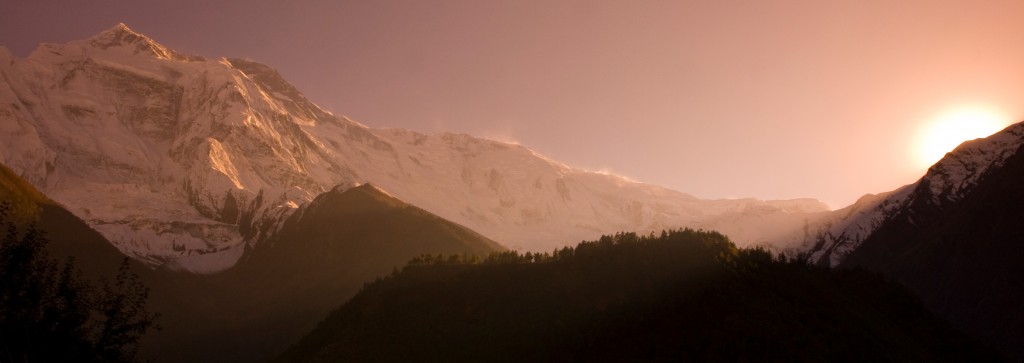
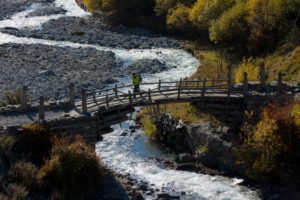
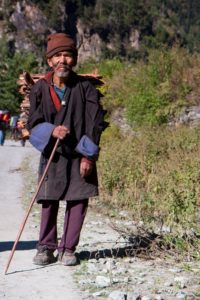
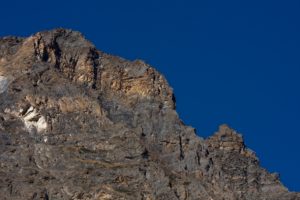

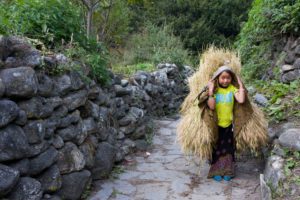

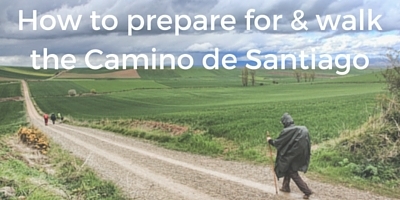



By Anil January 13, 2010 - 7:06 am
Our bodies are so efficient in adapting, it’s usually our minds that make us think change is difficult. Looking at those photos I too can’t complain about the chores I had to do when I was a kid – carrying that hay, now *that’s* work!
By Heather on her travels January 14, 2010 - 3:17 am
What a beautiful description of the pains & pleasures of wallking in nepal. I do feel the cold though, I can’t imaging wanting to go anywhere where I shiver in my sleeping bag, however beautiful the scenery.
By Barbara at Hole in the Donut Travels January 14, 2010 - 12:19 pm
AMAZING photos! The only time I have been up that high was at pikes Peak in Colorado as a child, and I remember the light-headedness and vague feeling of nausea to this day. I don’t know how I’d do at this altitude, now that I’m an adult, and I certainly don’t like the cold! Yet I envy your experience and really hope I can do it some day.
By admin January 15, 2010 - 7:21 pm
You can do it – the hard part it fitting it into your travel schedule! Yes – the altitude is high…but this is just the beginning – wait for my future posts – we attempt to go as high as 17,777 ft.!
By Mark H January 14, 2010 - 4:49 pm
You capture the trekking spirit so well with your words. And the magic of Tiger Balm….
By Migration Mark January 23, 2010 - 10:56 am
These thoughts bring me back to last year when I did a 10 day trek in Patagonia and thought I wouldn’t survive the chills. Annapurna circuit is on my list to hike in the near future, and I will be sure to bring some tiger balm with me! Fantastic photos!
By Martin Fiala March 21, 2015 - 4:15 pm
Hallo Sherry,
Congrats to your great page and your photo portfolio. I am editor of a backcountry photo and story magazine X-JOURNEY. Its published once a year with focus on high end pictures and great stories about remote treks and trails. Please let me know if you would be interested to work with us, I found some potential stories on your webpage. I will be happy to send you an example of a story from last year and details to the possible cooperation.
Best regards
Martin
By Sherry March 23, 2015 - 6:02 pm
Hi Martin – thanks for contacting me – I’ll send you an email and follow up!